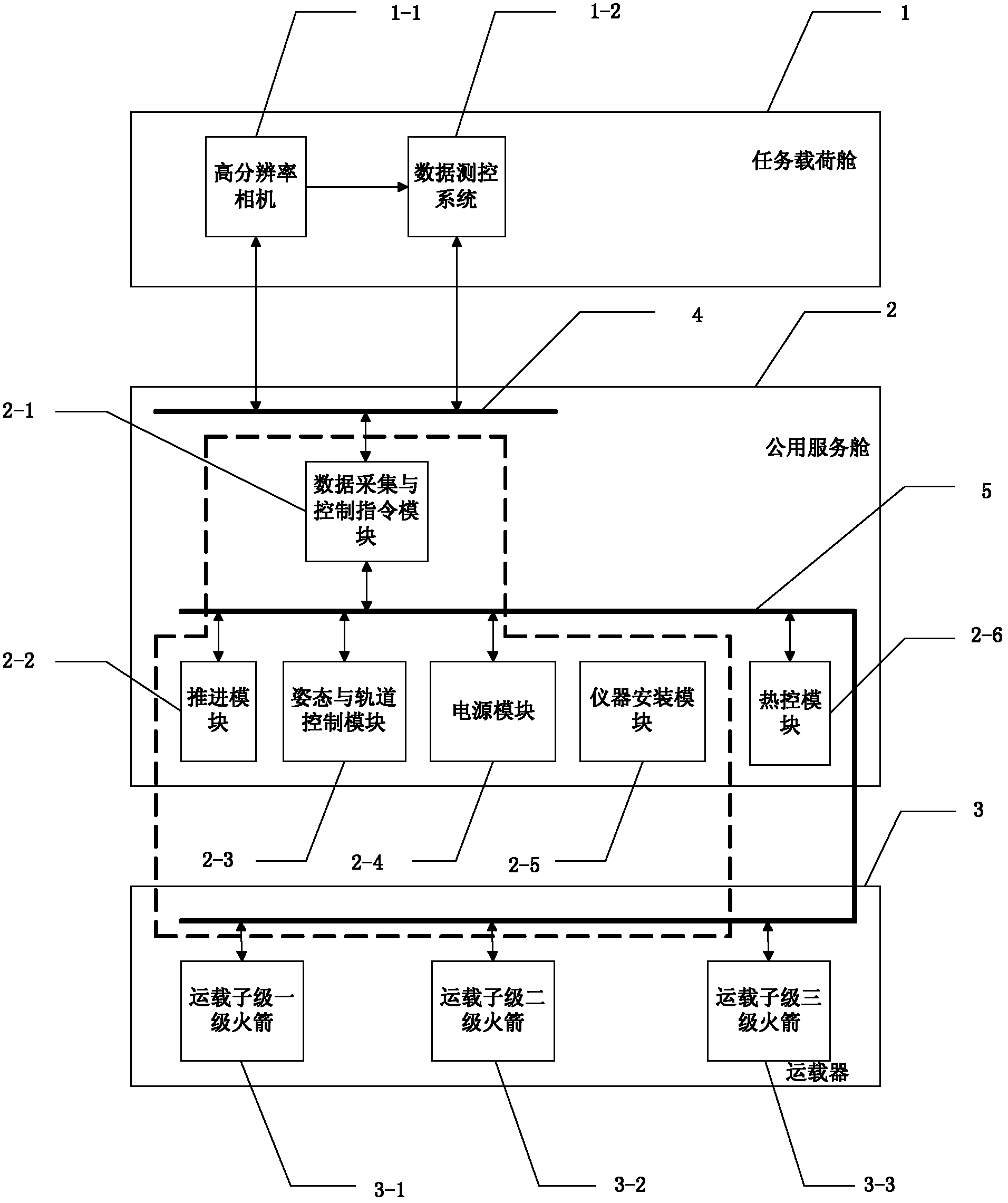Satellite and launch vehicle integrated aerospace system
A technology for aerospace systems and vehicles, which is applied in the field of integrated aerospace systems of satellites and vehicles, can solve problems such as difficulty in adapting to demands flexibly, constraints on the quality and capability of small-carrying spacecraft entering orbit, etc.
- Summary
- Abstract
- Description
- Claims
- Application Information
AI Technical Summary
Problems solved by technology
Method used
Image
Examples
specific Embodiment approach 1
[0009] DETAILED DESCRIPTION OF THE PREFERRED EMBODIMENTS 1. An integrated aerospace system for satellites and vehicles, which includes a mission payload cabin 1 and a vehicle 3, a high-resolution camera 1-1 and a data measurement and control system 1-2 are set in the mission payload cabin 1, and the vehicle 3 includes carrier-stage first-stage rocket 3-1, carrier-stage second-stage rocket 3-2 and carrier-stage third-stage rocket 3-3, and is characterized in that: it also includes shared service module 2, first CAN bus 4 and The second CAN bus 5, data acquisition and control command module 2-1, propulsion module 2-2, attitude and track control module 2-3, power supply module 2-4, instrument installation module 2-5 and thermal control module 2-6,
[0010] The data acquisition and control instruction module 2-1 performs information transmission through the first CAN bus 4, the high-resolution camera 1-1 and the data and measurement and control module 1-2, and the data acquisition...
specific Embodiment approach 2
[0012] Embodiment 2. The difference between this embodiment and Embodiment 1 is: the propulsion module 2-2, the propulsion module used for the final boost of the vehicle 3 and the orbit maintenance and maneuvering of the satellite in orbit, the propulsion module 2-2 Provide the vehicle 3 with the control torque command required for side jet flow control in the active phase, provide propulsion power and attitude control torque commands in the final boost phase, and provide orbit maintenance and maneuver power for the satellite during the orbital operation phase control command.
specific Embodiment approach 3
[0013] Embodiment 3. The difference between this embodiment and Embodiment 1 is that the attitude and orbit control module 2-3 is a module integrated with the guidance, navigation and control of the vehicle 3 and the control of the mission load cabin 1, and adopts The three-axis stability control scheme for the ground, usually adopts the orientation mode to the sun during the orbit operation, and adopts the orientation mode to the ground when taking pictures. Expand the imaging range of high-resolution camera 1-1 for ground reconnaissance; it has high-precision and high-stability attitude control capabilities in low-orbit environments, which meets the requirements of high-resolution camera 1-1 high-resolution imaging. Attitude and orbit control module 2-3 is used to control the orbit of the common service module 2 after the first-stage rocket 3-1 of the carrier, the second-stage rocket 3-2 of the carrier and the third-stage rocket 3-3 of the carrier 3 are separated .
PUM
 Login to View More
Login to View More Abstract
Description
Claims
Application Information
 Login to View More
Login to View More - R&D
- Intellectual Property
- Life Sciences
- Materials
- Tech Scout
- Unparalleled Data Quality
- Higher Quality Content
- 60% Fewer Hallucinations
Browse by: Latest US Patents, China's latest patents, Technical Efficacy Thesaurus, Application Domain, Technology Topic, Popular Technical Reports.
© 2025 PatSnap. All rights reserved.Legal|Privacy policy|Modern Slavery Act Transparency Statement|Sitemap|About US| Contact US: help@patsnap.com


